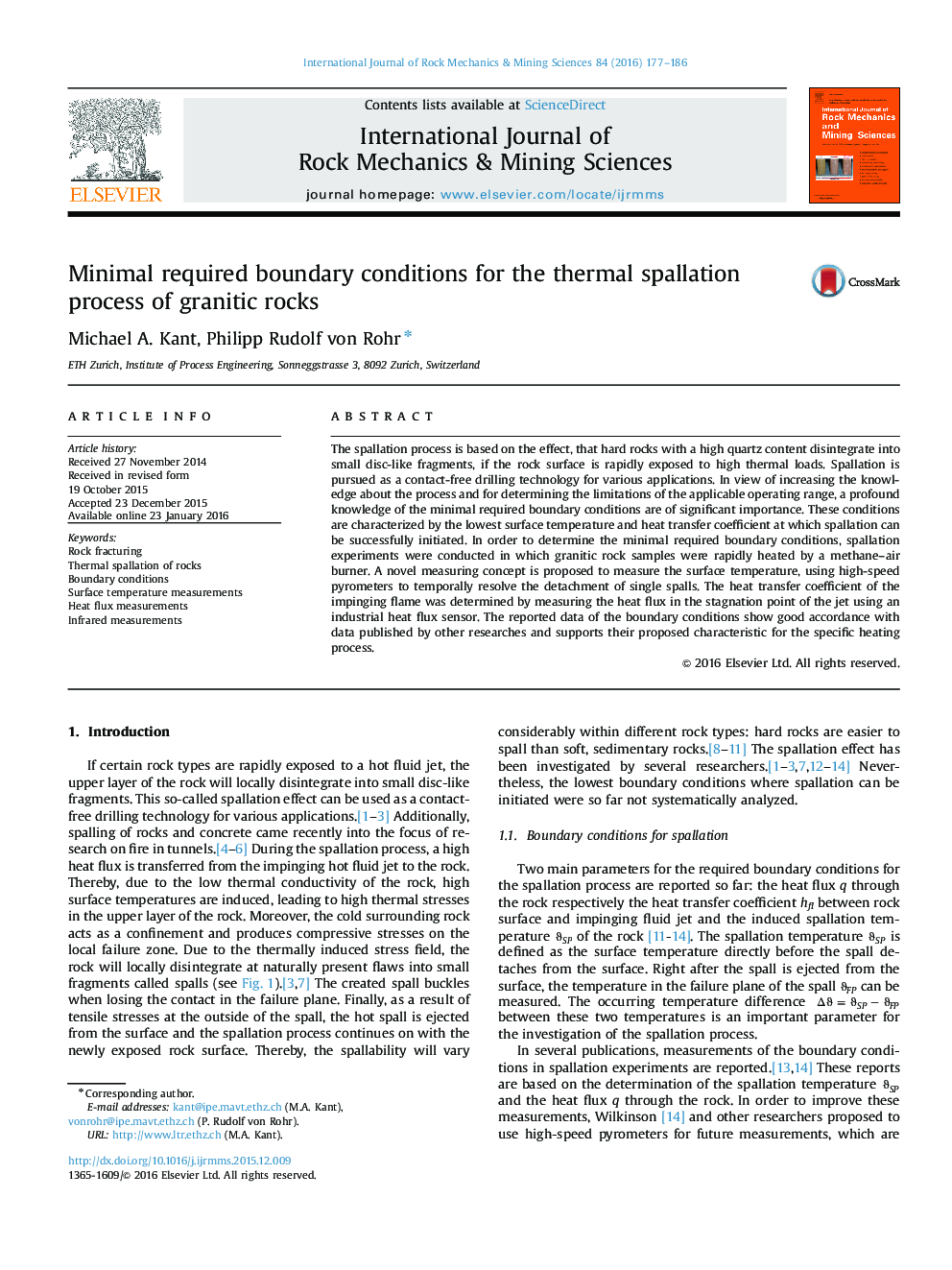| Article ID | Journal | Published Year | Pages | File Type |
|---|---|---|---|---|
| 809012 | International Journal of Rock Mechanics and Mining Sciences | 2016 | 10 Pages |
•An experimental procedure for the determination of the appearing boundary conditions in the thermal spallation process is proposed.•With this procedure it is possible to resolve the detachment of single spalls.•The minimal required boundary conditions for the spallation process are derived.•Data characterize the lowest conditions where spallation can be successfully initiated.•These values form a basis for future simulations on the spallation process and for a successful design of a spallation tool.
The spallation process is based on the effect, that hard rocks with a high quartz content disintegrate into small disc-like fragments, if the rock surface is rapidly exposed to high thermal loads. Spallation is pursued as a contact-free drilling technology for various applications. In view of increasing the knowledge about the process and for determining the limitations of the applicable operating range, a profound knowledge of the minimal required boundary conditions are of significant importance. These conditions are characterized by the lowest surface temperature and heat transfer coefficient at which spallation can be successfully initiated. In order to determine the minimal required boundary conditions, spallation experiments were conducted in which granitic rock samples were rapidly heated by a methane–air burner. A novel measuring concept is proposed to measure the surface temperature, using high-speed pyrometers to temporally resolve the detachment of single spalls. The heat transfer coefficient of the impinging flame was determined by measuring the heat flux in the stagnation point of the jet using an industrial heat flux sensor. The reported data of the boundary conditions show good accordance with data published by other researches and supports their proposed characteristic for the specific heating process.
Graphical abstractFigure optionsDownload full-size imageDownload as PowerPoint slide
